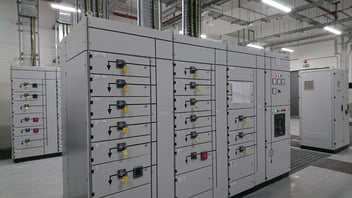Transforming Infrastructure with Clean Energy
A new reality is quietly taking place. It's a revolution that's not just about saving money but also about saving our planet. This article delves into the debate regarding the economic viability of incorporating renewable energy into infrastructure projects, how to balance the energy needs of these projects with renewable energy production and storage, and whether generated energy fulfills building load requirements.
The Economic Revolution
In a distant realm, renewable energy seemed like a distant dream, too expensive for practical use. But things have changed. Statistical reports highlight falling costs. Solar energy, once considered a luxury, is now becoming affordable. According to the International Renewable Energy Agency (IRENA), solar electricity costs dropped by 82% between 2010 and 2019.
Renewable energy is no longer an alternative; it's a competitor. Numerous studies reveal that renewable energy now stands toe-to-toe with fossil fuels in terms of cost-effectiveness. IRENA's "Renewable Power Generation Costs in 2020" report even claims that renewable power generation is often the cheapest way to generate electricity worldwide.
The return on investment is an attractive proposition. While installing renewable energy systems might be expensive upfront, they do promise reduced energy bills and the possibility of selling excess energy back to the grid.
A Balancing Act
But there's a catch. Renewable energy is unpredictable, with intermittent generation. Imagine a world where the sun isn't always shining. This is where energy storage comes to the rescue. Batteries are rapidly advancing, making it possible to store excess renewable energy for later use.
Sophisticated energy management systems play a pivotal role in optimising renewable energy usage. They keep a close eye on energy demand, weather forecasts, and energy generation, ensuring infrastructure projects always have a stable supply of power.
Grid integration is another piece of the poser. Renewable energy systems that are linked to the grid can balance the supply and demand of energy. When production exceeds demand, excess energy flows back into the grid, and when renewable generation falls short, grid power fills the gap.
Powering the Infrastructure
However, the question remains: can renewable energy fulfill the energy needs of buildings? The answer depends on several factors, including the capacity of renewable energy systems, energy demand, and energy efficiency measures.
The utilisation of low-emissivity window glazing paired with flexible lightweight IP-rated solar panels stickers are well-suited for curved surfaces due to their flexibility. This combination not only contributes to electricity generation but also significantly diminishes the demand for space cooling.
Solar photovoltaics, wind turbines, hydropower, and geothermal systems provide a sustainable and reliable energy supply. Solar water heating, using sunlight to warm water for various purposes, reduces our reliance on traditional methods and brings significant energy savings.
Environmental Transformation
In 2021 carbon emissions in the MENA region dropped by 15% in the Middle East and North Africa (MENA). The driving force behind this change was the increased use of renewable energy sources. Infrastructure projects, powered by renewables, not only proved economically viable but also played a vital role in environmental preservation.
Reduced carbon emissions, cleaner air, and job opportunities emerged as the region's key achievements in its quest for cleaner and more sustainable energy solutions strengthened.
Policies and Progress
Government incentives, flexible tariff rates, and subsidies aim to make renewable energy integration even more appealing, encouraging clean energy adoption and reducing the payback period for investments.
There is no doubt the debate has shifted. It's no longer about whether renewable energy integration makes sense but rather how to make it work best while meeting building energy needs. Material costs are dropping, and technology is advancing. With the right policies and a commitment to change, renewable energy is transforming our infrastructure, offering economic and environmental benefits that we can all celebrate.
By Shivabalan Raveendran, Godwin Austen Johnson
.png)














